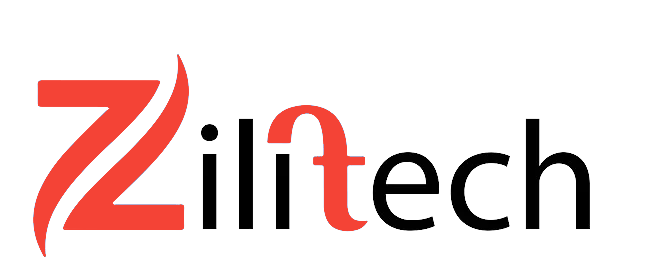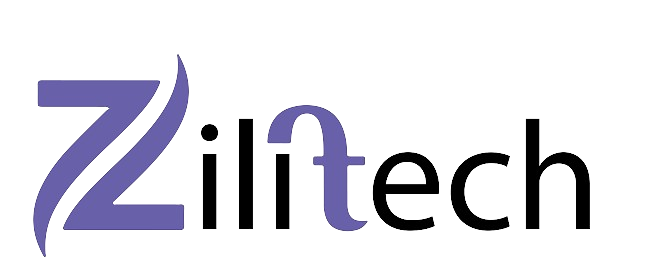In the digital age, online learning has transformed education, making knowledge accessible anytime and anywhere. Whether you’re a small educational startup or a large institution, having a robust online learning platform is crucial. But what features make an online learning website effective and engaging? Let’s explore the must-have elements that ensure a seamless and enriching experience for learners.

User-Friendly Interface
Intuitive Navigation
An intuitive interface is the backbone of any successful online learning website. Clear and simple navigation ensures that users can find their way around the platform effortlessly. Incorporate menus, breadcrumbs, and a search bar to help users locate courses, materials, and other resources quickly.
Accessibility Options
Accessibility is not just a bonus; it’s a necessity. Features like adjustable text size, screen reader compatibility, and keyboard navigation make your platform usable for everyone, including those with disabilities. Compliance with WCAG (Web Content Accessibility Guidelines) is essential.
Responsive Design
In a world where learning happens on the go, your website must be responsive. This means it should adapt seamlessly to various screen sizes and devices, providing an optimal user experience whether on a desktop, tablet, or smartphone.
Comprehensive Course Management
Course Creation Tools
Providing robust course creation tools is essential. Instructors should be able to design courses with ease, using templates, multimedia integration, and interactive content. A drag-and-drop interface can make the process more user-friendly.
Multi-Format Content Support
Support for various content formats—videos, PDFs, interactive quizzes, and more—enhances the learning experience. This flexibility allows instructors to cater to different learning styles and keeps learners engaged.
Automated Grading and Assessment
Automated grading systems save time and reduce errors. Features like multiple-choice assessments, fill-in-the-blank exercises, and even AI-driven essay grading can streamline evaluation and provide immediate feedback to learners.
Interactive Learning Features
Quizzes and Assignments
Engagement is key in online learning. Quizzes, assignments, and self-assessments help reinforce learning. They also provide valuable data on learner progress, enabling instructors to identify areas where students may need additional support.
Discussion Forums
Discussion forums foster a sense of community. They allow learners to interact, discuss topics, ask questions, and collaborate on projects. This peer interaction can significantly enhance the learning experience.
Live Classes and Webinars
Live classes and webinars bring a real-time, interactive element to online learning. They allow for direct interaction between instructors and learners, facilitating immediate feedback and dynamic discussions.
Personalization and Adaptive Learning
Personalized Learning Paths
Personalized learning paths adapt to the needs and preferences of each learner. By analyzing learner data, the system can recommend courses, materials, and activities tailored to individual progress and interests.
Adaptive Assessments
Adaptive assessments adjust their difficulty based on the learner’s performance, providing a more accurate measure of their knowledge and skills. This ensures that learners are neither bored nor overwhelmed.
Learning Analytics
Learning analytics provide insights into how learners interact with the platform. Metrics such as time spent on activities, quiz scores, and course completion rates can help identify trends and areas for improvement.
Robust Communication Tools
Messaging Systems
Effective communication is vital in online learning. A built-in messaging system allows for seamless interaction between instructors and learners. This can be used for feedback, queries, and support.
Video Conferencing
Video conferencing tools facilitate live interactions, making virtual classrooms more engaging. Features like screen sharing, recording, and breakout rooms can enhance the learning experience.
Announcements and Notifications
Regular updates and notifications keep learners informed about new courses, deadlines, and important announcements. This helps maintain engagement and ensures that learners don’t miss crucial information.
Secure Payment Gateways
Multiple Payment Options
A secure and versatile payment gateway supports various payment methods, including credit cards, PayPal, and direct bank transfers. This flexibility ensures that users from different regions can pay conveniently.
Subscription Management
Subscription management tools allow for recurring payments, renewals, and upgrades. This is particularly useful for platforms offering membership-based access to courses.
Financial Security
Security features like SSL encryption, PCI compliance, and fraud detection ensure that financial transactions are safe and trustworthy, protecting both the platform and its users.
Mobile Learning Capabilities
Mobile App Integration
A dedicated mobile app enhances accessibility, allowing learners to access courses on their smartphones. Features like push notifications, offline access, and mobile-optimized content keep learners engaged on the go.
Offline Access
Offline access enables learners to download content and study without an internet connection. This is especially beneficial for those in areas with unreliable connectivity or for frequent travelers.
Mobile-Optimized Content
Ensuring that your content is mobile-optimized means it is easily readable and navigable on smaller screens. This includes responsive video players, touch-friendly interfaces, and scalable text.
Content Management System (CMS)
Easy Content Uploading
A user-friendly CMS allows for straightforward content uploading. Instructors should be able to upload videos, documents, and other materials with ease, without needing technical expertise.
Content Organization
Organizing content effectively is crucial for user navigation. Features like categorization, tagging, and content hierarchies help users find materials quickly and efficiently.
Version Control
Version control ensures that the most current versions of documents and courses are always accessible. It also allows for rollback to previous versions if needed.
Gamification Elements
Badges and Certificates
Gamification motivates learners by awarding badges and certificates for course completions, achievements, and milestones. This not only provides a sense of accomplishment but also encourages continued engagement.
Leaderboards
Leaderboards create a competitive environment by displaying top performers. This can drive engagement and motivate learners to participate more actively.
Progress Tracking
Progress tracking tools show learners how far they’ve come in a course and what steps they need to complete next. This helps maintain motivation and provides a clear path to course completion.
Social Learning Integration
Social Media Sharing
Integration with social media platforms allows learners to share their achievements and course materials with their networks, fostering a sense of community and expanding the platform’s reach.
Peer-to-Peer Interaction
Facilitating peer-to-peer interaction through study groups, collaborative projects, and peer reviews enhances the learning experience by encouraging knowledge sharing and cooperation.
Collaborative Projects
Collaborative projects enable learners to work together on assignments and tasks, simulating real-world scenarios and enhancing problem-solving skills.
Data Security and Privacy
Compliance with Data Protection Regulations
Compliance with regulations such as GDPR and CCPA ensures that user data is handled responsibly and ethically, protecting the privacy of learners.
Secure User Authentication
Secure user authentication mechanisms, including two-factor authentication and single sign-on, protect user accounts from unauthorized access.
Data Encryption
Encrypting data both in transit and at rest safeguards sensitive information, preventing data breaches and ensuring the confidentiality of user data.
Multi-Language Support
Localization Options
Localization features allow the platform to be adapted for different regions and languages, making it accessible to a global audience.
Translation Tools
Built-in translation tools can automatically translate course materials, user interfaces, and support content, broadening the platform’s reach and inclusivity.
Language Preferences
Allowing users to set their language preferences enhances the user experience by providing content and navigation in their preferred language.
Analytics and Reporting
Learner Progress Reports
Detailed learner progress reports provide insights into individual performance, helping instructors tailor support and interventions as needed.
Course Performance Metrics
Metrics on course performance, such as enrollment rates, completion rates, and learner feedback, help administrators refine and improve course offerings.
Feedback Collection
Feedback collection tools enable learners to provide input on courses, instructors, and the platform, offering valuable insights for continuous improvement.
Customer Support and Helpdesk
FAQs and Knowledge Base
An extensive FAQs section and knowledge base provide learners with self-help resources, reducing the need for direct support and improving user satisfaction.
Live Chat Support
Live chat support offers immediate assistance for technical issues, course inquiries, and other concerns, enhancing the overall user experience.
Ticketing System
A ticketing system helps manage support requests efficiently, ensuring that issues are tracked and resolved promptly.
Conclusion
Creating a top-tier online learning platform involves integrating a variety of features that enhance usability, engagement, and security. From user-friendly interfaces to advanced personalization and robust support systems, each element plays a crucial role in providing a comprehensive learning experience. As online education continues to evolve, staying ahead with innovative features will ensure that your platform remains competitive and effective.
FAQs
1. What are the most important features for an online learning website? The most crucial features include a user-friendly interface, comprehensive course management, interactive learning tools, personalization options, secure payment gateways, and robust communication systems.
2. How can I ensure the security of user data on an online learning platform? Ensure compliance with data protection regulations, use secure user authentication methods, and encrypt data both in transit and at rest to safeguard user information.
3. What role does gamification play in online learning? Gamification enhances engagement by providing incentives like badges, certificates, and leaderboards, making learning more enjoyable and motivating.
4. Why is mobile compatibility crucial for online learning websites? Mobile compatibility allows learners to access courses anytime and anywhere, accommodating their schedules and making learning more flexible and accessible.
5. How can I personalize the learning experience for users? Utilize adaptive learning paths, personalized assessments, and learning analytics to tailor the educational experience to individual learner needs and preferences.





